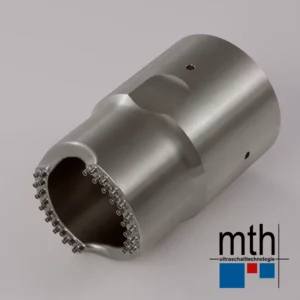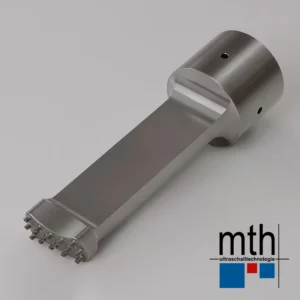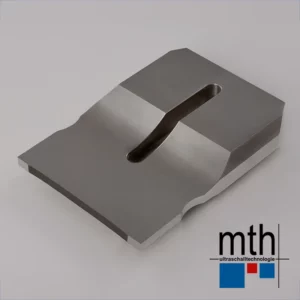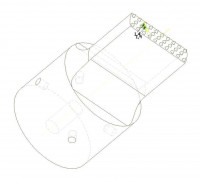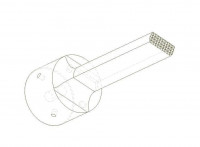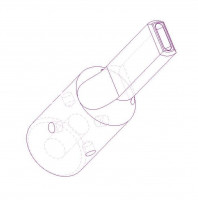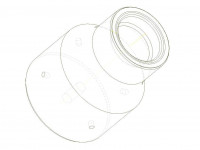sonotrodes
mth Ultraschalltechnologie has been manufacturing sonotrodes independently of manufacturers for more than 2 decades. From design to final production, we offer complete in-house production of sonotrodes for a variety of ultrasonic systems from different manufacturers and with all common application functions.These include welding, cut-off welding, riveting, embossing, punching and cutting.
Continue to “Customized solutions” »
-
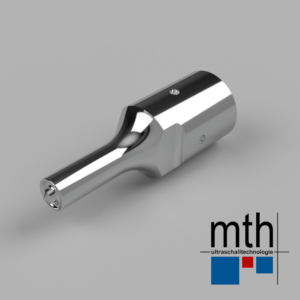
Sonotrode 40kHz, titanium, for faecal bands up to 2 mm thick
290,00 €excl. 19% VAT
add. shipping fees
To product » -
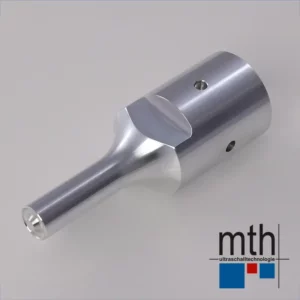
Sonotrode 40kHz, titanium, for faecal bands up to 1.2 mm thick
290,00 €excl. 19% VAT
add. shipping fees
To product » -
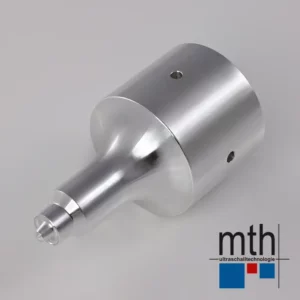
Point sonotrode aluminium 40kHz, mth-7836
390,00 €excl. 19% VAT
add. shipping fees
To product » -
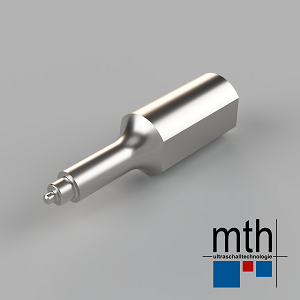
Titanium rivet sonotrode 40kHz, mth-6456
490,00 €excl. 19% VAT
add. shipping fees
To product » -
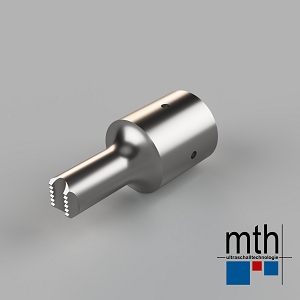
Titanium point probe 40kHz, mth-12031
790,00 €excl. 19% VAT
add. shipping fees
To product » -
Needle sonotrode titanium 40kHz, mth-2345
865,00 €excl. 19% VAT
add. shipping fees
To product » -
Bridge sonotrode titanium 40kHz, mth-00048
890,00 €excl. 19% VAT
add. shipping fees
To product » -
Needle sonotrode D=30, d=18/12 H=3.5
890,00 €excl. 19% VAT
add. shipping fees
To product » -
Sonotrode Titan 40kHz, mth-028520
890,00 €excl. 19% VAT
add. shipping fees
To product » -
Titanium 20kHz sonotrode, mth-00385
1.950,00 €excl. 19% VAT
add. shipping fees
To product »
Materials for sonotrodes
In addition to the geometry, the correct choice of material is decisive for the longevity of a sonotrode. mth designs and manufactures sonotrodes with the appropriate material depending on the application.
- Aluminium alloy sonotrodes: Aluminium is primarily used for large-volume sonotrodes and those with high heat dissipation requirements. Aluminium can be coated with a hard anodised layer to reduce wear.
- Titanium alloy sonotrodes: Titanium is the standard material when it comes to more complex contours and long service lives. Surface hardening is also possible with titanium.
- Sonotrodes made of tool steel: Hardened steel is required if workpieces with a high fibre content or (partially) chrome-plated workpieces are to be welded.
- Sonotrodes made from other materials:Other materials and specific surface finishes are available on request.
Sonotrode types
We manufacture the following types of sonotrodes for various applications: round, knife, block, spot, needle, bar, piercing and fakir sonotrodes.
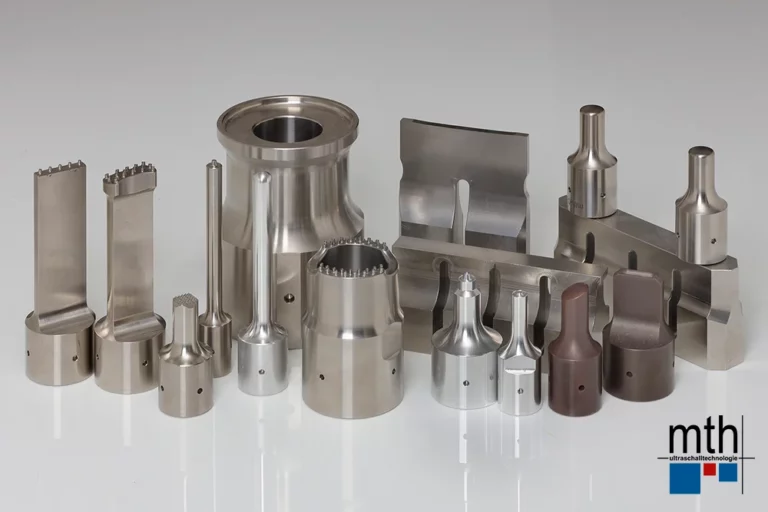
How is a sonotrode manufactured?
Before a sonotrode can be manufactured, the designer determines the contours based on the component geometry. Depending on the size of the workpiece and the material, the frequency is then selected and a CAD model is created using reference data.
The finite element method (FEM) is used to adjust the vibration behaviour. This means that the model is modified until the vibration behaviour is optimal in terms of both amplitude and uniformity. The CAM data for the machining centre is then generated from the CAD model and the sonotrode is manufactured by machining the solid material.
Fault patterns and countermeasures
Sonotrodes are subject to wear due to material contact as well as thermal and mechanical loads. We have summarised some typical error patterns in this video.
Function of the sonotrode
The sonotrode is the link between the welding system and the workpiece. It transmits the vibration energy of the ultrasonic system, ensures the amplitude transformation and transfers the contact pressure of the machine to the workpiece. We manufacture sonotrodes and the necessary Booster after analysing the customer’s requirements in detail, both for standard tasks and for individual ultrasonic applications. mth supplies the appropriate titanium coupling screws for attaching the sonotrodes to the ultrasonic converter .
Haben Sie Fragen?
Wir helfen Ihnen gerne bei allen Fragen im Bereich der Herstellung von Sonotroden individuell weiter:
Other ultrasonic components
Ultrasonic
converter
Variety of ultrasonic converters
mth offers ultrasonic converters for common frequencies such as 20 kHz, 30 kHz, 35 kHz and 40 kHz. Der Konverter wandelt den hochfrequenten Wechselstrom des Ultraschall-Generators in mechanische Schwingungen mit Amplituden von etwa 5-12 µm um.
Ultrasonic
booster
Our ultrasonic boosters
Ultrasonic
generators
Energy-efficient welding
All generators have standard functions for time-controlled and energy-controlled welding. With time-controlled welding, the ultrasonic output is automatically stopped after the preset time and the energy output is displayed.
